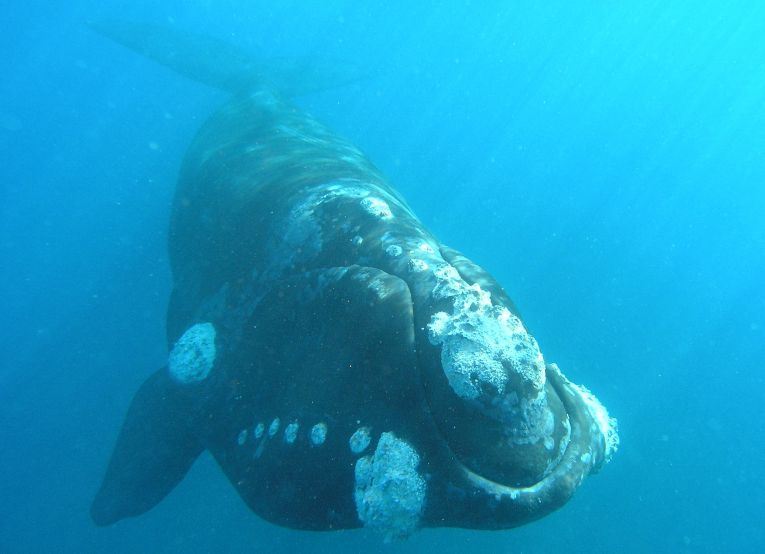When whales were whales and men were a nuisance, the right whales were common. The recovery of several species after the awful and bloody decimation by the old whalers is slow but sure. The exact population supported by the oceanic ecosystems is of great interest and several intrepid data hunters have collaborated in finding just how these giants lived.
Eubalena australis is the New Zealand species of right whale, left with 15-20 mature female animals in the years 1914-1926, after a century of barbaric attacks on estimated populations of from 28800-47100 individuals at dates ranging back to 1770. Sex-biased attacks took mothers and calves preferentially, in coastal attacks known as bay-whaling
, increasing the oil returns with less effort.
This paper studies An integrated approach to historical population assessment of the great whales: case off the New Zealand southern right whale
with Jennifer A. Jackson of the British Antarctic survey and 5 colleagues from The Universities of Oregon state, St Andrews and Auckland, the Brazilian Instituto Aqualie, the Collegial International Sainte-Anne, Montreal, Quebec and World Whaling History in California, US. They publish today in the Proceedings of the Royal Society. We last looked at this whale in a specialised satellite study in Argentina and South Africa.
With 12 distinct winter calving grounds and a recognised fidelity to each home ground by the whales and their offspring, genetically different populations existed and were hunted using different methods, with varying success. The SW Pacific has the most accurate catch history for 3 of these breeding grounds, possibly because calving was popular around New Zealand coastal waters in the winter by what the Maori called the Tohora. Between 35000 and 41000 southern rights were killed over 150 years, with quite accurate logging carried out throughout that period.
As might have been expected, the species had disappeared from New Zealand by 1870. Other SW Pacific populations had been eradicated by 1805! The refugium for which the whalers probably searched was deep in the empty sub-Antarctic waters (near the Auckland Islands) and slow recovery at the level of 7% pa is expected, as tentative recolonisation of mainland New Zealand waters takes place. 2,200 whales were counted in 2009.
The Kermadec Islands to the east of the mainland are associated with most whales recently. Some genetically related animals occur around Warrnambool in Australia, but only 250 were counted in 2014. This population would certainly be able to mix or have mixed with the New Zealand population, especially during times of stress, but there seem to be genetic distinctions and different mating habits. When whales mix offshore in the summer, the connectivity will obviously affect population genetics. If the feeding grounds of 2 or more populations were similar, then catches from the different sources would have confused any counting of their numbers. 16 feasible modelling scenarios were prepared to see which matched actual data and recovery.
What was revealed was a prolonged population bottleneck within all the models. Between 1915 and 1925, minimum populations existed. Probably around 150 whales survived 5 decades of intense hunting. Finally, around 1950, some expansion took place, but illegal Soviet catches of 372 animals from the region in the 1960s delayed any recovery. The Auckland Island population in the south seems to be contributing to a mainland New Zealand increase, but few data exist for these offshore summer feeding grounds. It was thought that 100,000 circumpolar right whales in total existed at one distant time, but genetic-based estimates now increase that to 202-370,500 whales. The type of estimate obviously affects the result, so we need to find out why these estimates are so different. In New Zealand population estimates, there is less discordance. 35,000 is the genetic -based estimate for those using the coastal bays for calving and feeding to the east in little-surveyed waters. The role of the whale in food webs would therefore be significant for zooplankton communities and even coastal nutrient supplies.
Those 20 mature females that survived attack and led the breeding effort early last century have now produced a viable population at 12% of its pre-exploitation abundance. Over 50 years or so, we can expect an eventual return to a large population of 27,000. The ecosystem will certainly benefit.















